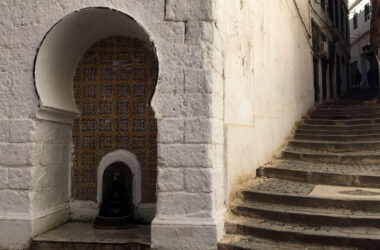The Jesuit Missions of the Guaranis stand as solemn reminders of one of the most ambitious cultural and religious projects in South America’s colonial history. Located in Argentina’s Misiones Province and Brazil’s southern Rio Grande do Sul, these UNESCO World Heritage Sites chronicle the efforts of Jesuit missionaries who, from the 17th to 18th centuries, created settlements known as “reducciones” to convert and protect the indigenous Guarani people.
These missions weren’t just religious outposts; they were thriving cultural centers, self-sufficient communities that combined Christian doctrine with Guarani traditions, art, and social organization. Today, the ruins of San Ignacio Mini, Santa Ana, Nuestra Señora de Loreto, Santa Maria Mayor, and São Miguel das Missões offer a remarkable window into this unique chapter of colonial and indigenous history.
The History Behind the Jesuit Missions of the Guaranis
Founded between the early 1600s and mid-1700s, the missions were created by Jesuit priests with permission from the Spanish and Portuguese crowns. The aim was to evangelize and “civilize” the native Guarani populations without exposing them to the abuse common in colonial society. These reducciones became semi-autonomous Christian communities where the Guarani could live, farm, study, and practice religion under Jesuit guidance.
At their height, the Jesuit Missions housed over 100,000 Guaranis across 30 settlements in what is now Argentina, Brazil, Paraguay, and Bolivia. In 1767, the Spanish Crown expelled the Jesuits, leading to the decline and eventual abandonment of these once-thriving enclaves.
Highlights of the Jesuit Missions in Argentina
1. San Ignacio Mini
The most well-preserved and frequently visited mission in Argentina, San Ignacio Mini was founded in 1610 and relocated in 1696. It features stunning Baroque architecture, intricately carved stonework, and a massive church façade. Nighttime sound-and-light shows bring the ruins to life.
2. Santa Ana
Built in 1633, Santa Ana was one of the largest missions. Though overgrown, its ruins include church foundations, cemeteries, and residential quarters, giving a clear sense of the scale of Jesuit settlements.
3. Nuestra Señora de Loreto
Founded in 1610, Loreto became a center for Guarani education and printing. Visitors can see remains of the church, housing, and educational buildings.
4. Santa Maria Mayor
Though smaller and more remote, this site provides an intimate look at mission layout and function. It retains parts of the church structure and residential areas.
Highlight in Brazil: São Miguel das Missões
5. Ruins of São Miguel das Missões
This mission, known as São Miguel Arcanjo, is the most important Jesuit ruin in Brazil. Built in the 1730s, it features a striking church facade, museum (Museu das Missões), and an immersive sound-and-light show that narrates the history of the Jesuit-Guarani society.
Cultural and Architectural Significance
- Baroque and Guarani Fusion: The missions blend European religious architecture with indigenous construction techniques and motifs, creating a unique artistic legacy.
- Self-sustaining Communities: Each reduction included churches, workshops, schools, and communal living spaces, all structured around religious life and agriculture.
- Living Memory: The Guarani people still honor their cultural and spiritual roots linked to these missions.
How to Visit the Jesuit Missions
In Argentina:
- Access Point: Posadas or Puerto Iguazú (with Iguazú Falls nearby)
- Transport: Buses, car rentals, and guided tours available.
- Pass System: A combined ticket grants access to all four major missions.
In Brazil:
- Access Point: São Miguel das Missões, near Santo Ângelo
- Museu das Missões: Offers context and preserved artifacts.
Best Time to Visit
- Spring and Autumn (Sept-Nov, Mar-May): Mild temperatures and lower tourist traffic.
- Summer (Dec-Feb): Hot and humid but ideal for combining with Iguazú Falls.
- Winter (Jun-Aug): Cooler and drier, good for photography and walking tours.
Tips for Visitors
- Wear comfortable shoes for walking.
- Bring insect repellent—especially in summer.
- Consider bilingual or local guides to better understand the history.
- Allow time for both day and night visits (especially in San Ignacio Mini).
10 Frequently Asked Questions (FAQs)
1. What are the Jesuit Missions of the Guaranis?
They are historical settlements built by Jesuit priests to evangelize and protect the Guarani people in the 17th and 18th centuries.
2. Why are they UNESCO World Heritage Sites?
They represent a rare fusion of indigenous and European cultures, preserved through architecture, planning, and cultural practices.
3. Where are these missions located?
Primarily in northern Argentina (Misiones Province) and southern Brazil (Rio Grande do Sul).
4. What is the most visited Jesuit mission in Argentina?
San Ignacio Mini, due to its preservation, location, and tourist infrastructure.
5. How were the Guarani involved in the missions?
The Guarani lived in these communities, practicing Christianity, farming, learning arts and trades, and co-governing with the Jesuits.
6. Are there any guided tours available?
Yes, local agencies in Posadas, Puerto Iguazú, and São Miguel das Missões offer comprehensive tours with multilingual guides.
7. What languages are spoken at these sites?
Primarily Spanish in Argentina and Portuguese in Brazil, though English tours are increasingly available.
8. Can you visit all the missions in one trip?
Yes, with careful planning and at least 2–3 days, you can visit all key sites in both Argentina and Brazil.
9. Are the ruins accessible for families or seniors?
Yes, but some areas may involve uneven terrain. San Ignacio Mini is the most accessible.
10. Is photography allowed at the missions?
Absolutely! Photography is encouraged, especially during golden hour and light shows.
Read about all the World Heritage Sites
Conclusion: Why the Jesuit Missions of the Guaranis Matter Today
The Jesuit Missions of the Guaranis are not just remnants of a bygone religious effort—they are testaments to cultural hybridity, resistance, and spiritual resilience. They offer deep insights into how indigenous and colonial worlds intersected to create something extraordinary.
Whether you’re a history buff, cultural traveler, or spiritual seeker, visiting these missions provides a rare, enriching experience in the heart of South America. From the elegant carvings of San Ignacio Mini to the solemn grandeur of São Miguel das Missões, the story of the Guarani and Jesuits continues to echo across these sacred ruins.









